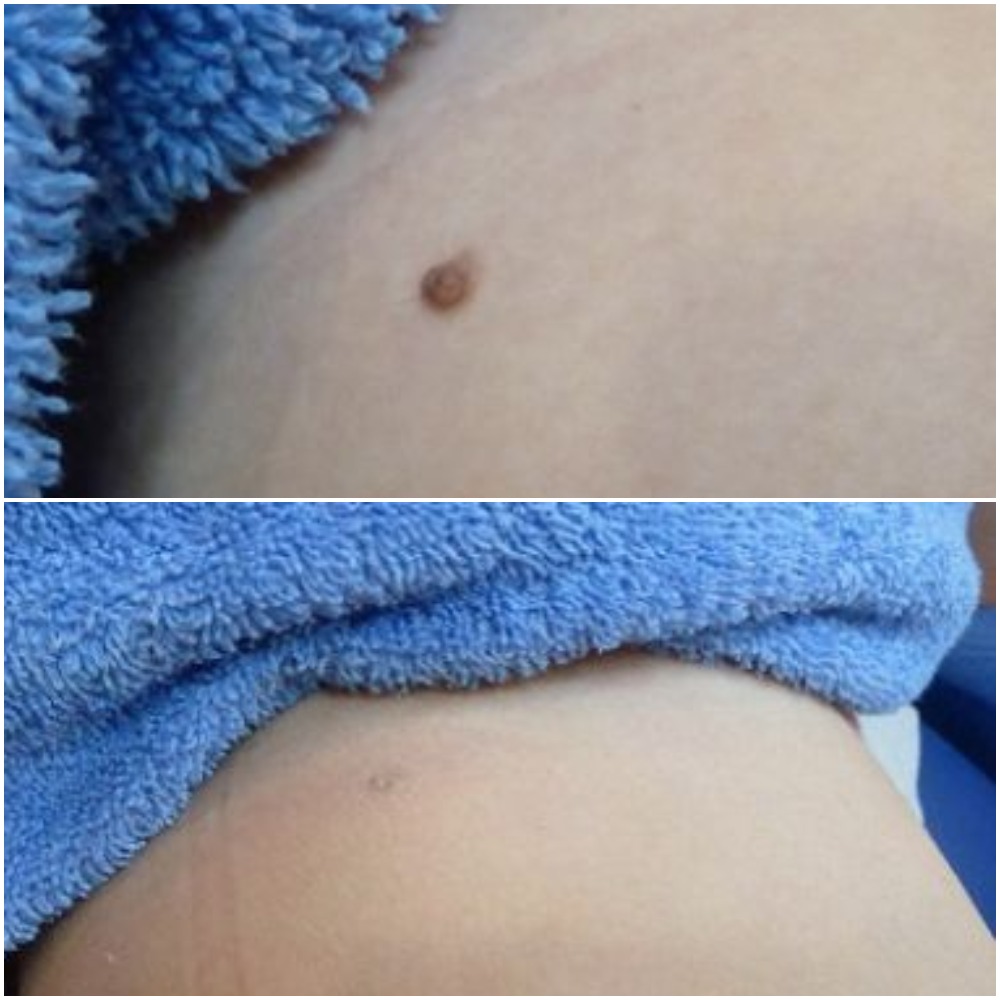Skin Tags FAQs
Cauterisation is the safest and fastest way to remove them. We use ACP (an advanced form of electrolysis) that involves using a probe with a current emitted to the end of it, by tapping this against the neck of the skin tag, it’s cauterised instantly removing it. Any small bits of the skin tag that are left will subsequently harden up and fall off in the following days.
Skin tags occur when extra cells grow in the top layers of the skin. They tend to develop when the skin rubs against itself (e.g. underarms), clothing or jewellery.
Yes, using cauterisation. We use ACP (an advanced form of electrolysis) that involves using a probe with a current emitted to the end of it, by tapping this against the skin tag it’s cauterised, causing it to harden up and fall off in the following days.
Skin friction is the main cause of skin tags, including;
Skin to skin friction – In areas where skin friction is common such as underarms, eyelids and between folds of skin
Clothing – Common on the neck if people wear shirts regularly or under the breasts due to friction from wearing bras
Jewellery – If necklaces are worn daily the friction from this can cause skin tags
Skin friction is the main cause of skin tags, including;
Skin to skin friction – In areas where skin friction is common such as underarms, eyelids and between folds of skin
Clothing – Common on the neck if people wear shirts regularly or under the breasts due to friction from wearing bras
Jewellery – If necklaces are worn daily the friction from this can cause skin tags
Advanced electrolysis (ACP) involves using a probe with a current emitted to the end of it, by tapping this against the neck of the skin tag, it’s cauterised instantly removing it. Any small bits of the skin tag that are left will subsequently harden up and fall off in the following days.
Skincare will not be able to remove skin tags
There can be many reasons that your skin can be prone to skin tags including;
Regular skin friction – Skin friction is a common cause of skin tags in areas such as underarms, eyelids and between folds of skin. This can result in people that are overweight being prone to skin tags
Clothing – If you wear shirts regularly, underwire bras or tight clothing the friction from this can make you more prone to skin tags
Jewellery – If you wear a necklace daily the friction from this can cause skin tags
Age – Men and women can become more prone to skin tags and other skin lesions as they get older
Diabetes – Skin tags have been found to be common in people living with type 2 diabetes
No, there is no definitive research to suggest that skin tags are caused by stress.
Do avoid skin friction on clothes and jewellery
Do seek advice from your doctor or professional if you’re not sure that the lesion is a skin tag
Don’t pick skin tags
Don’t try to remove them at home
Should I be worried about skin tags?
Skin tags aren’t contagious or cancerous, however if you have any new pigmented lesions forming you should get this checked by your GP.
NO! You could end up damaging the healthy skin that the skin tag is attached to, resulting in permanent scarring. Cauterisation is the safest and fastest way to remove them. We use ACP (an advanced form of electrolysis) that involves using a probe with a current emitted to the end of it, by tapping this against the neck of the skin tag, it’s cauterised instantly removing it. Any small bits of the skin tag that are left will subsequently harden up and fall off in the following days.
Skin tags aren’t contagious or cancerous, however if you have any new pigmented lesions forming you should get this checked by your GP.
Avoid skin friction wherever possible, remove necklaces at night and wear loose fitting clothing.
Prices will vary based upon your location, the quality of the machine being used and the experience of your practitioner. Head to our price list to see pricing of our ACP blemish removal treatment which is the most commonly recommended treatment for skin tag removal.





